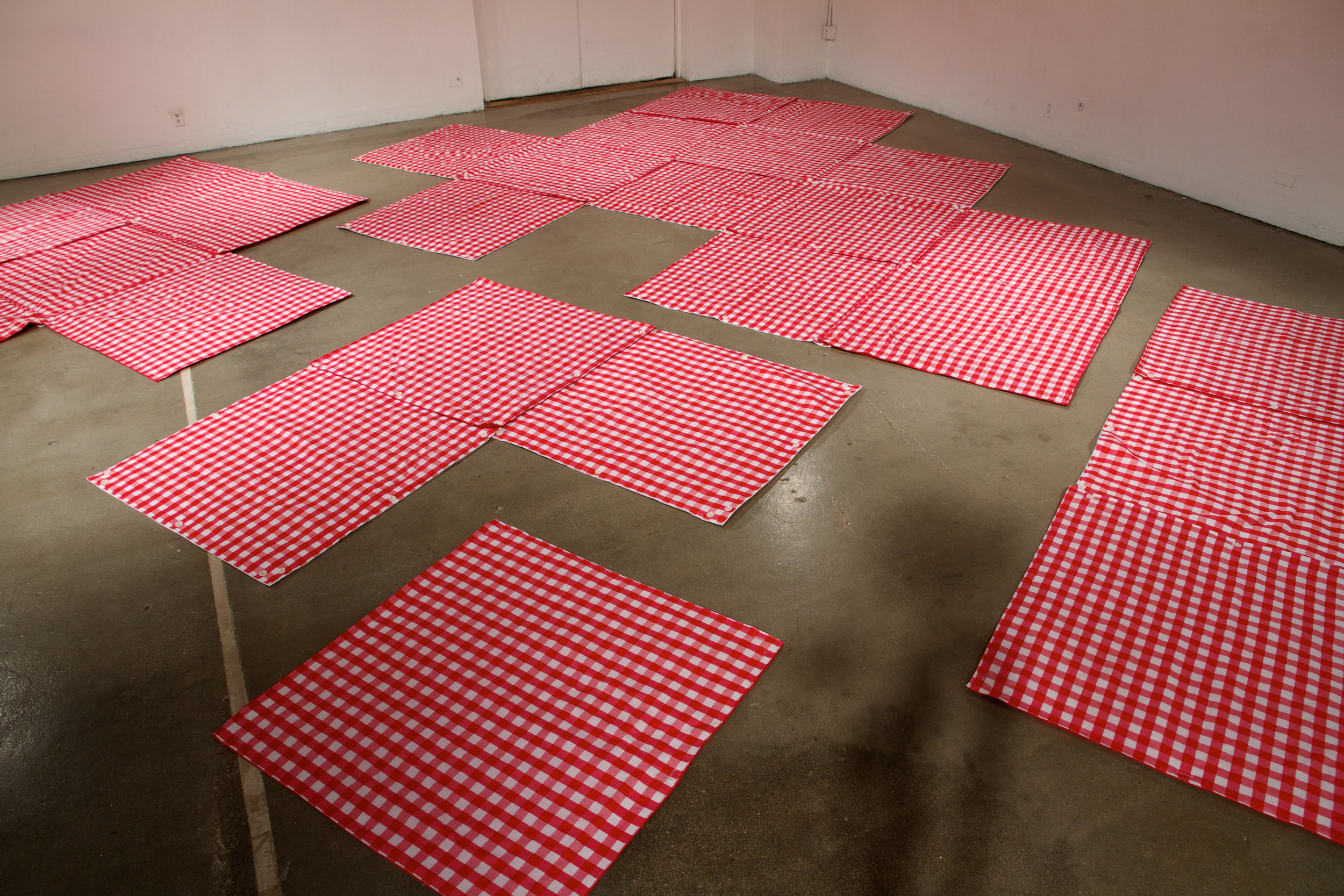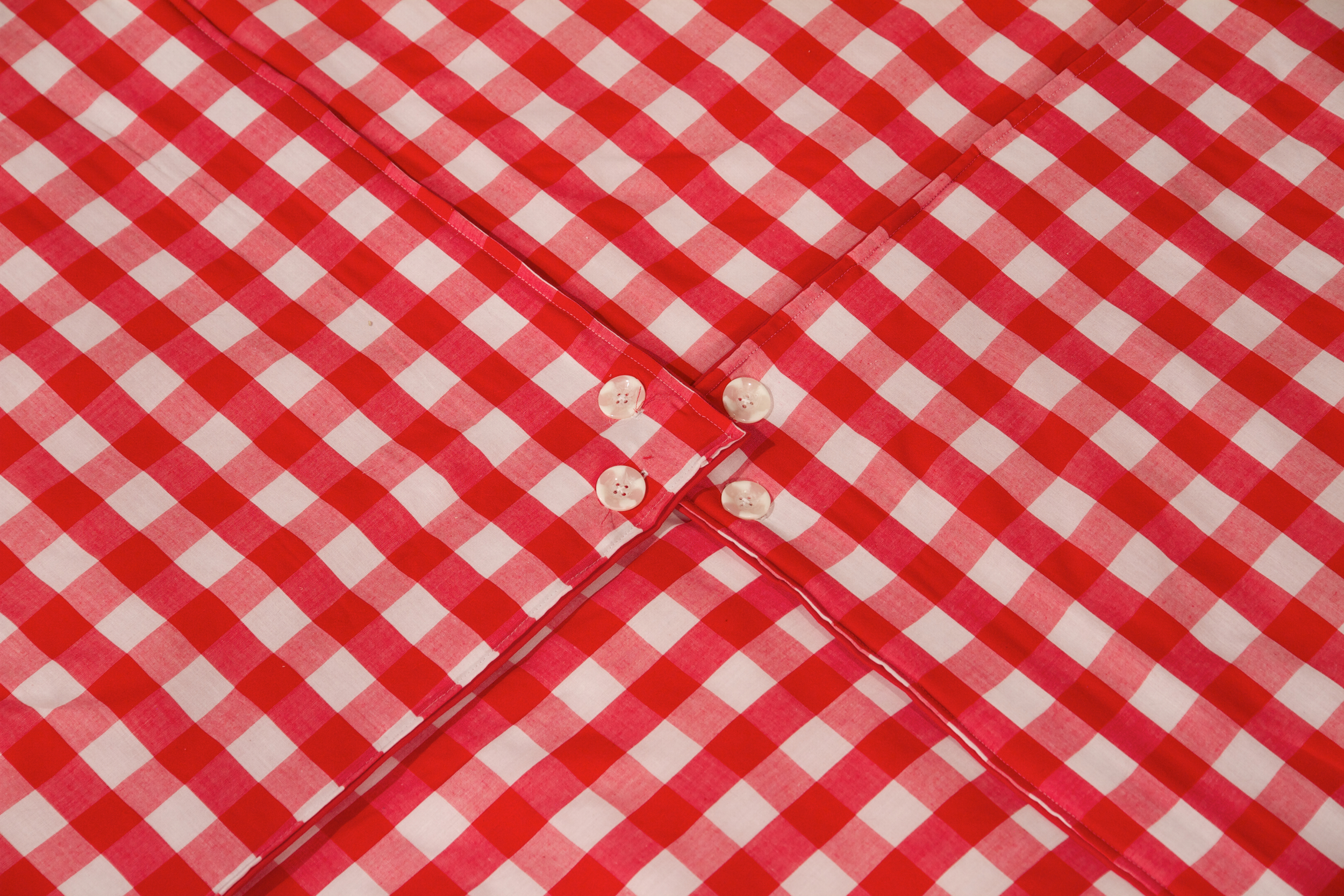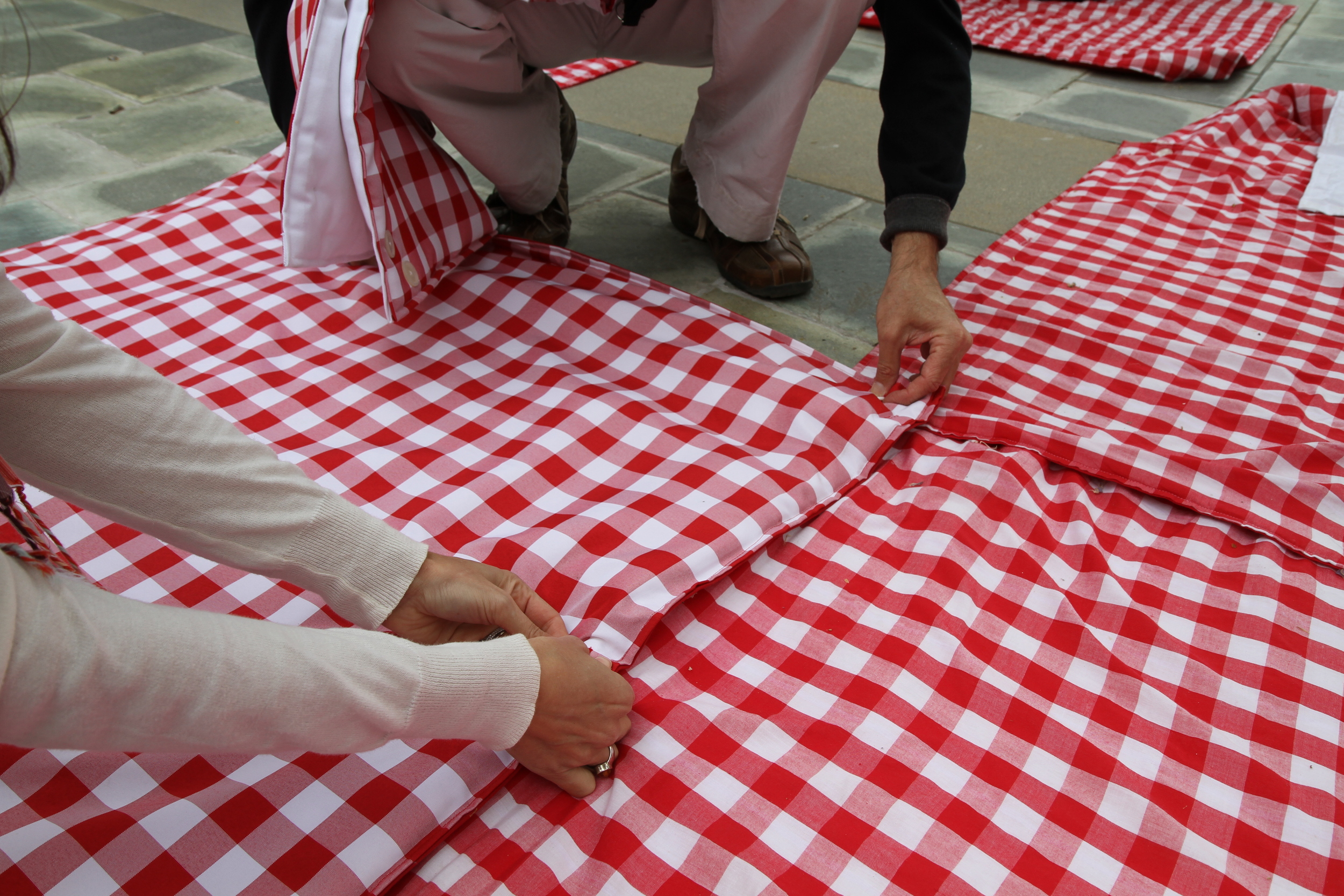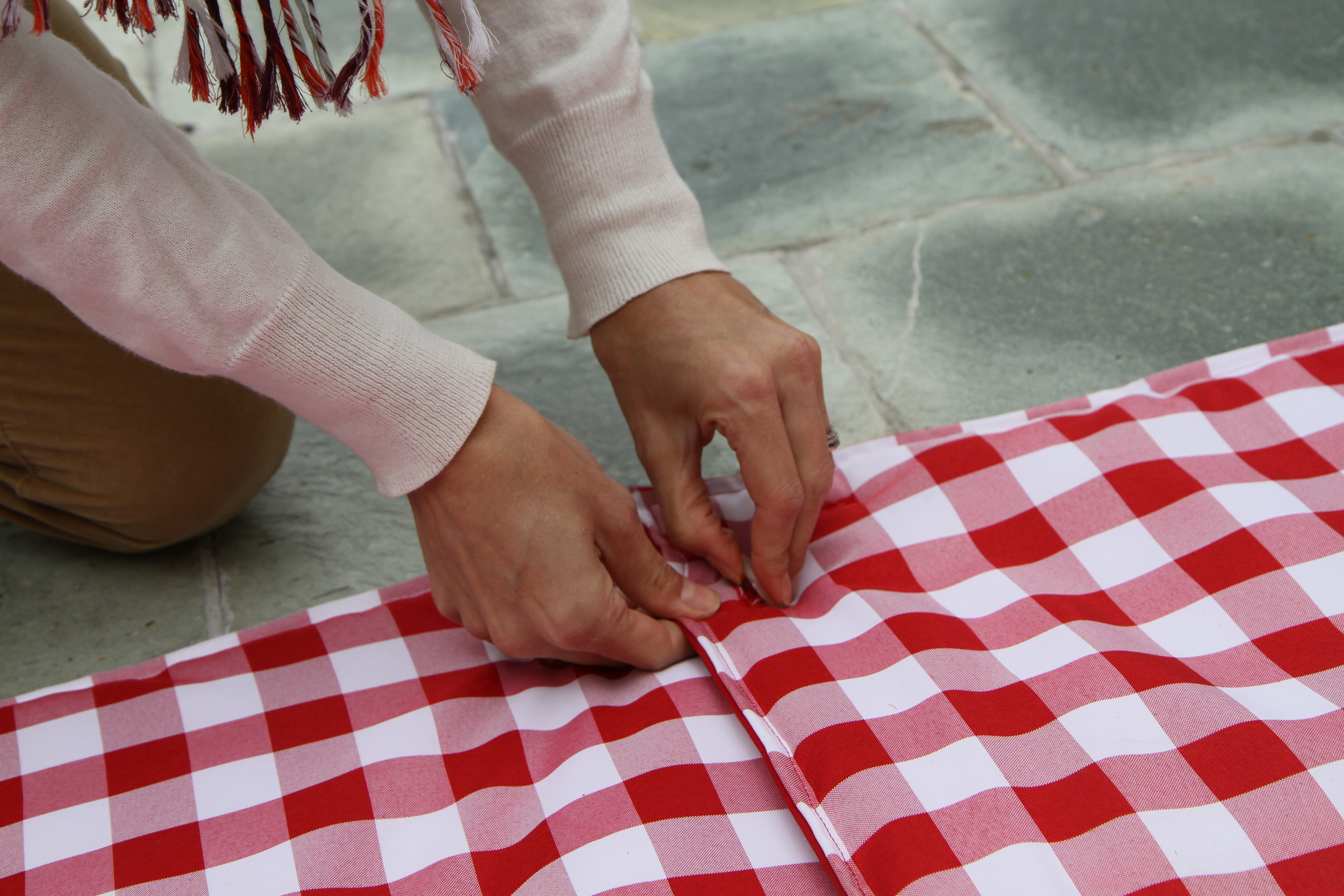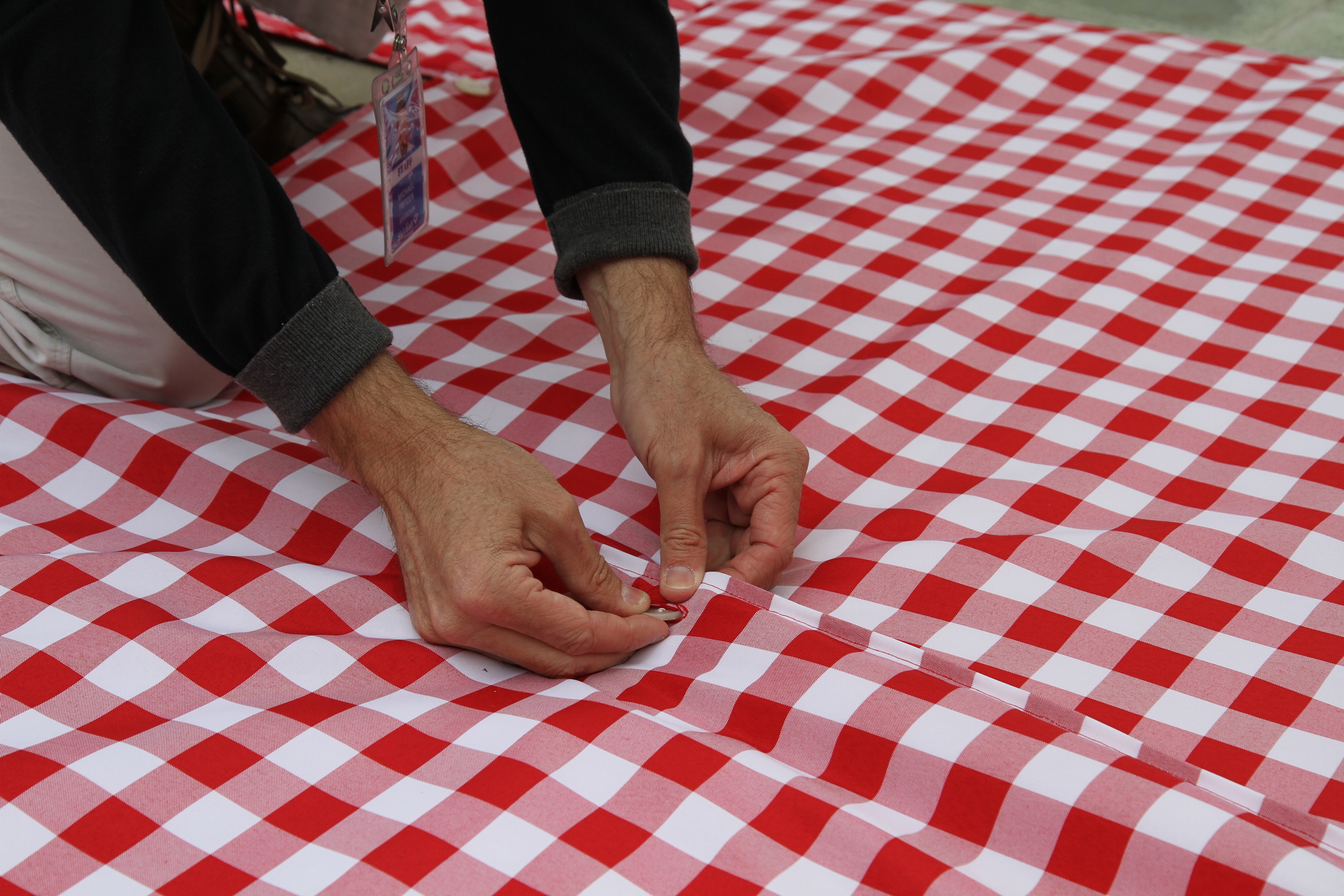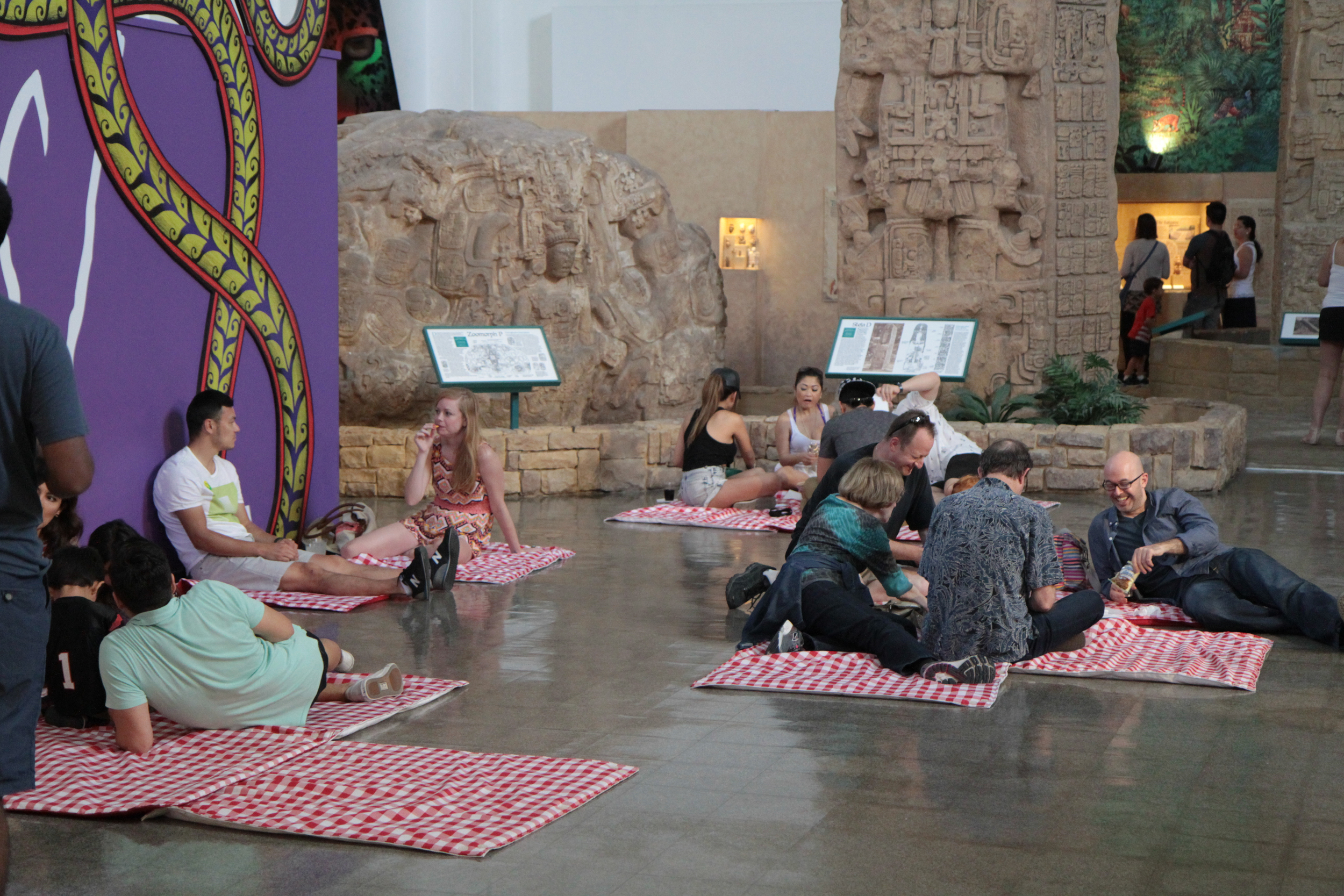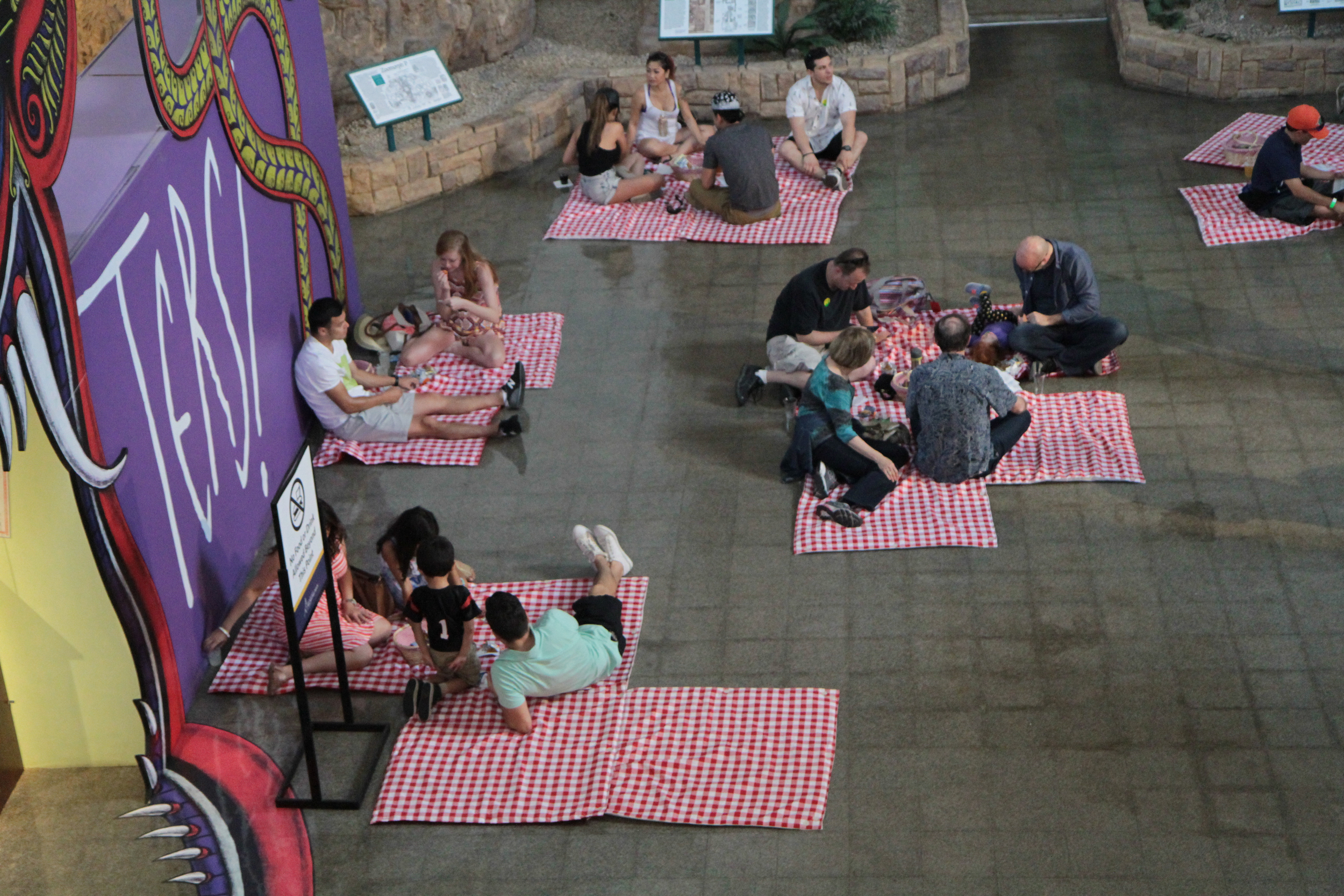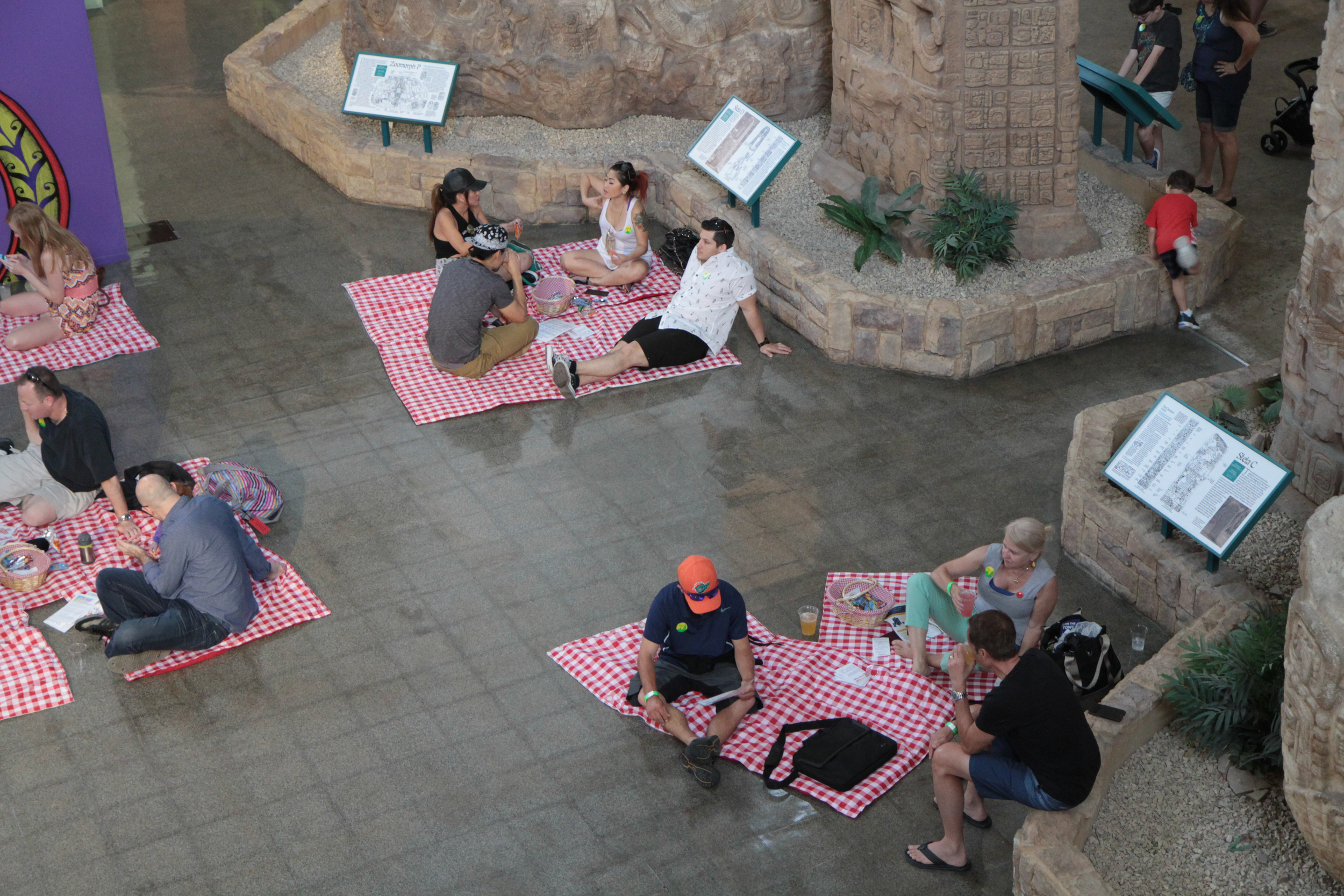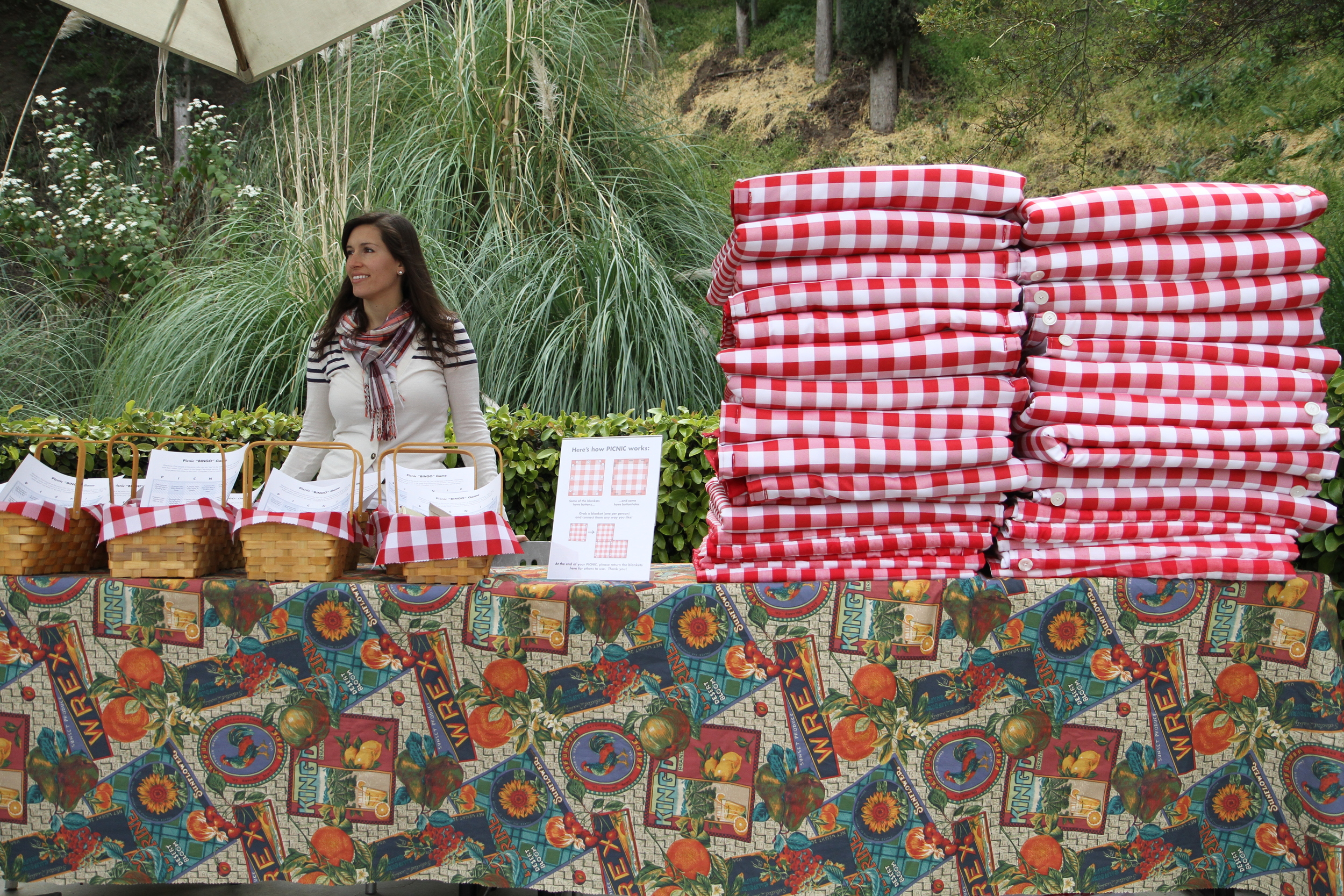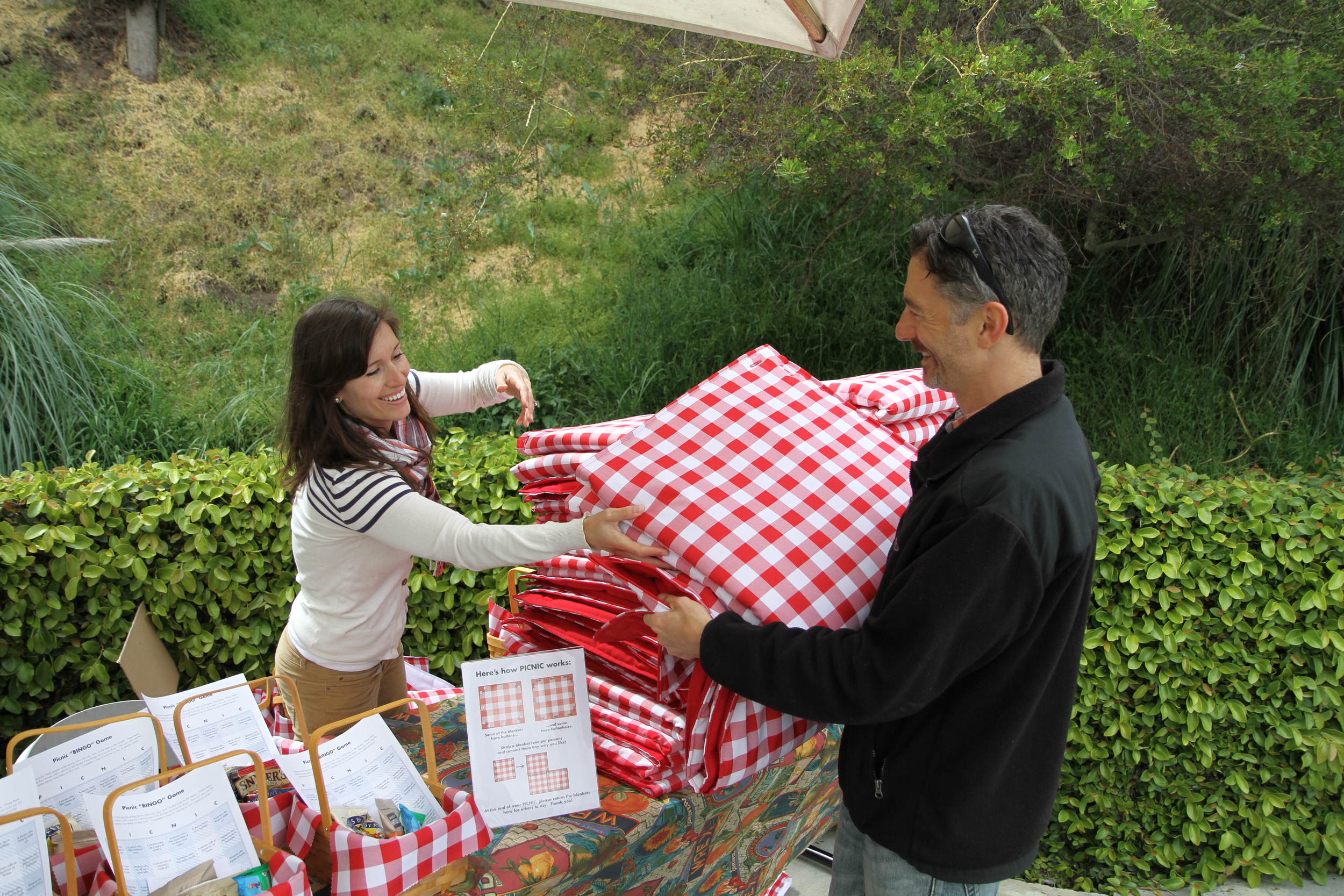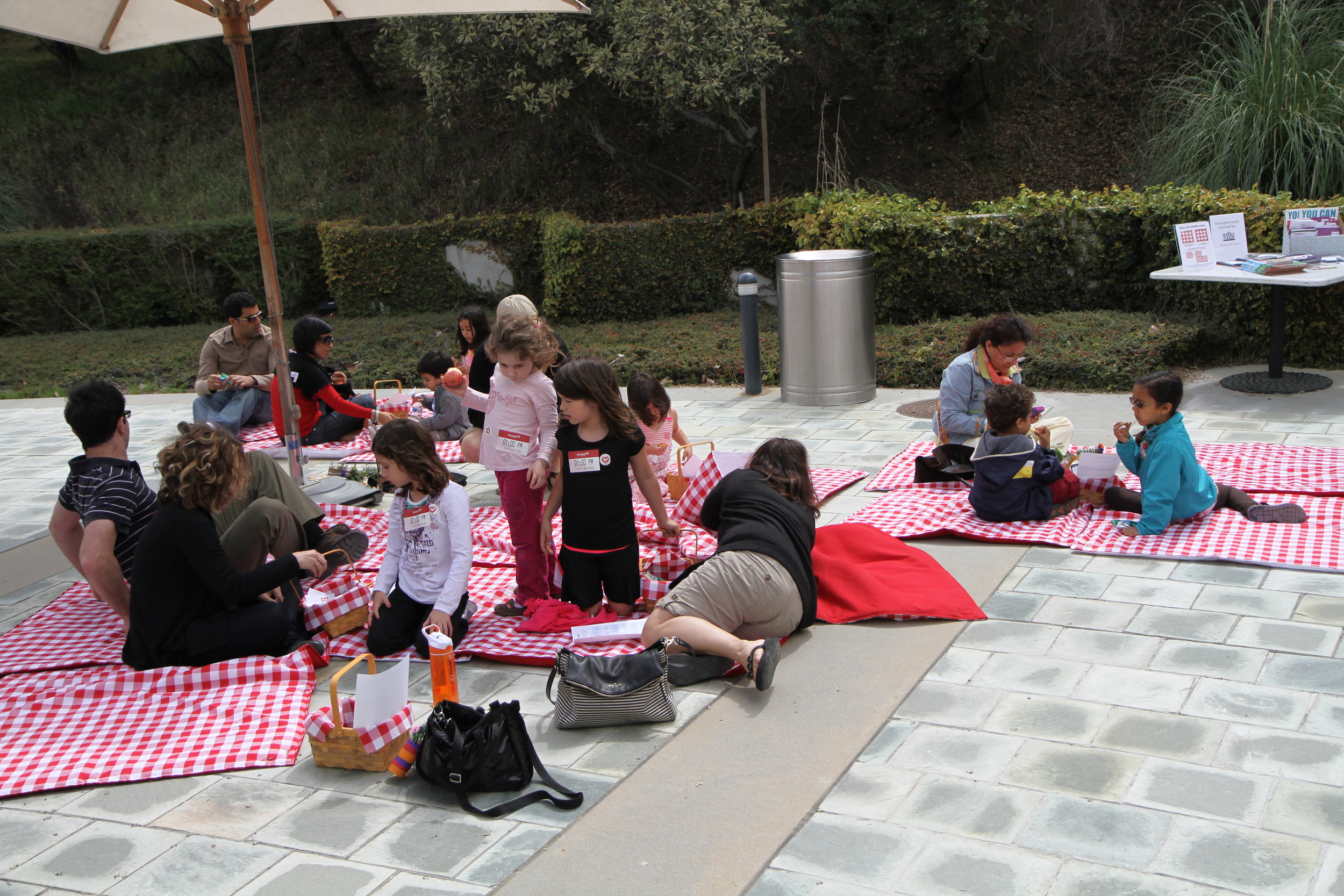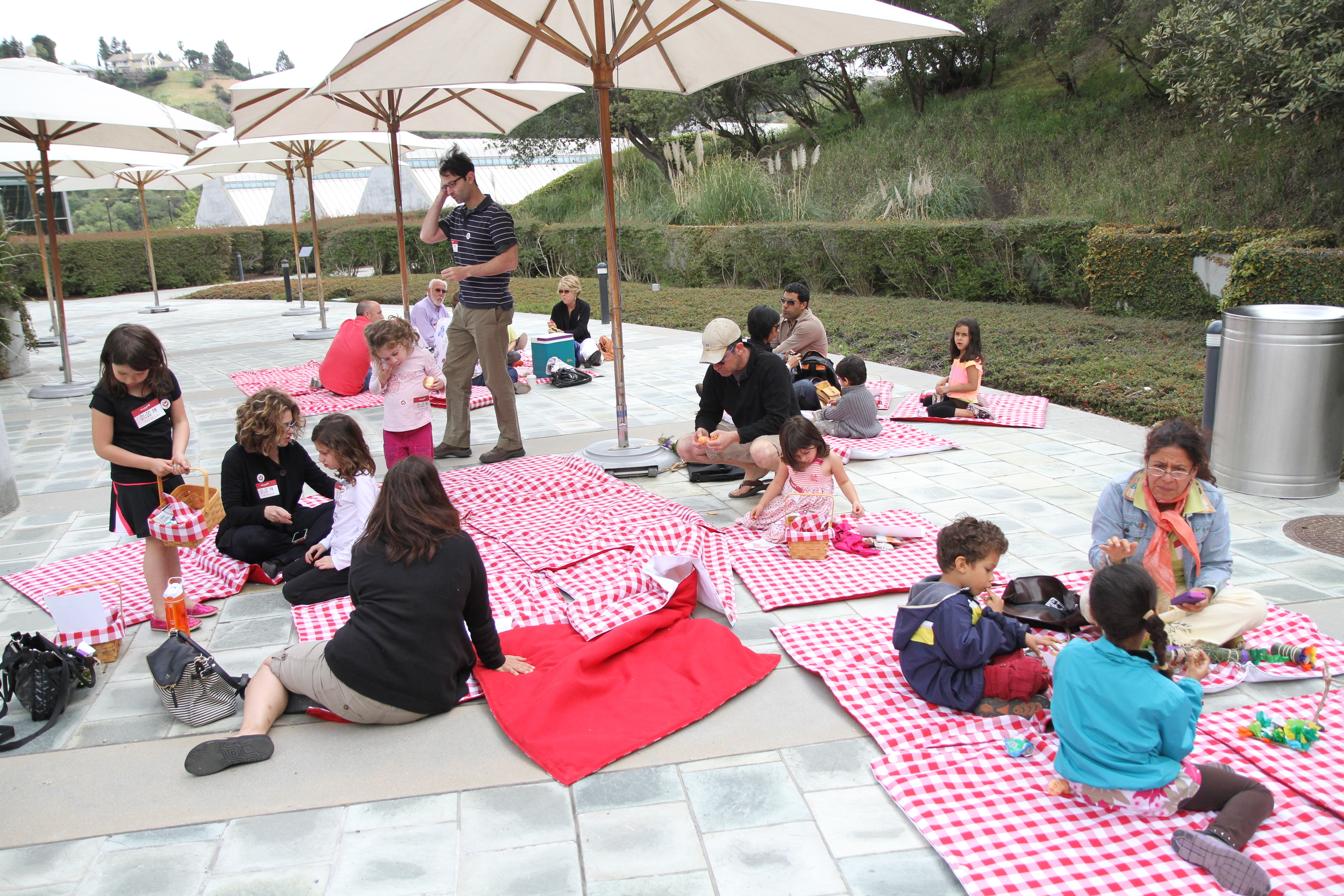Picnic is an interactive installation and social sculpture consisting of modular picnic blankets distributed to participants within public and private spaces such as civic museums, city squares, and parks. Each blanket is equipped with oversized buttons and buttonholes, emphasizing the potential for physical connection and collective engagement.
This site-specific project invites participants to utilize modular red-and-white gingham picnic blankets, each measuring 42 by 42 inches—the average area needed for one person to picnic comfortably. While individuals may choose to dine alone, the blankets are intentionally designed to facilitate connection: participants can fasten their blankets to others, creating larger communal configurations. During each activation, picnic blankets are loaned to the public for use within selected locations, such as the rotunda of the Museum of Man in Balboa Park, San Diego. Participants return the blankets to a designated point upon completing their picnic.
Participants are encouraged to explore the site, seek out new companions, and creatively adapt their picnic configurations to the surrounding geography—whether by hugging the corner of a building, wrapping around a tree, or constructing complex geometric forms. Each evolving arrangement reflects not only the physical landscape but also the evolving social relationships among participants.
Picnic promotes interaction both through its material design and its responsiveness to site specificity. The tangible mechanics of the blankets—the act of joining one to another—encourage individuals to initiate contact, collaborate, and co-create temporary community spaces. Beyond the physical act of connection, participants are invited to converse, share, and build relationships that may endure beyond the meal itself.
Through this performative act of shared space-making, Picnic explores the intersections of public gathering, communal labor, and spontaneous social interaction, offering a playful yet critical reflection on how we occupy, share, and reimagine public environments.
